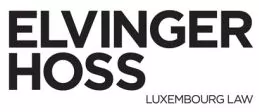- within Antitrust/Competition Law, Technology and Law Practice Management topic(s)
- with readers working within the Banking & Credit industries
1. Depositaries and Delegation under UCITS and AIFMD
On 20 July 2022, ESMA published an updated version of its Q&A on the application of the UCITS Directive and its Q&A on the application of the AIFMD including two new questions on depositaries and one new question on delegation. The issues (and responses) dealt with are identical in respect of both the AIFMD and UCITS.
- Depositaries
In the two questions on the depositaries, the ESMA gives further clarifications regarding (i) the reconciliation frequency of the depositary's accounts and records and those of its delegates and (ii) the reconciliation frequency and process requirements where the safekeeping of the assets has been delegated to a tri-party collateral manager.
- Delegation
This question seeks to clarify whether the AIFM/UCITS management company ("UCITS ManCo") is still responsible for ensuring compliance with Article 4 (1) of the CB Regulation (regarding the identification of marketing materials, description of risks and rewards of the investments and disclosure of fair, clear and not misleading information) where marketing is performed by a third party distributor (i) under a contractual relationship, or (ii) in the absence of a contractual relationship, with the AIFM or UCITS ManCo.
ESMA confirms the responsibility of the AIFM/UCITS ManCo in that respect on the basis that:
- marketing is to be considered as one of the functions included in the management of funds, and therefore subject to UCITS Directive (Article 13) and AIFMD (Article 20); and
- UCITS ManCos and AIFMs are responsible for compliance with CB Regulation (Article 4), irrespective of who is the actual entity marketing the fund, and of the relationship it has with the third-party distributor (whether it is contractual or not).
2. Managers of SPACs under AIFMD
On 16 December 2022, ESMA further updated its Q&A on the application of the AIFMD to include a new question dealing with the qualification managers of special purpose acquisition companies ("SPACs") under the AIFMD.
In this respect, EMSA clarifies that, due to the complex structure of SPAC transactions and the significant variations, it needs to be assessed on a case-by-case basis:
- whether SPACs meet the definition of an "AIF" as legally defined in Article 4 (1) (a) of the AIFMD, and
- whether SPACs qualify as a "holding company" in accordance with Article 4(1) (o) of the AIFMD.
ESMA notes that, during the life-cycle of a SPAC, there might be circumstances which may indicate that a SPAC is not an AIF as it might not meet all the elements described in the ESMA Guidelines on key concepts of the AIFMD (ESMA/2013/611).
In this context, please also refer to our Article published in December 2021 on the update of the CSSF FAQ on the UCI Law with respect to the possibility for UCITS to invest in SPACs for which it is relevant whether securities issued by SPACs qualify as transferable securities or as units of investment funds.
The content of this article is intended to provide a general guide to the subject matter. Specialist advice should be sought about your specific circumstances.


